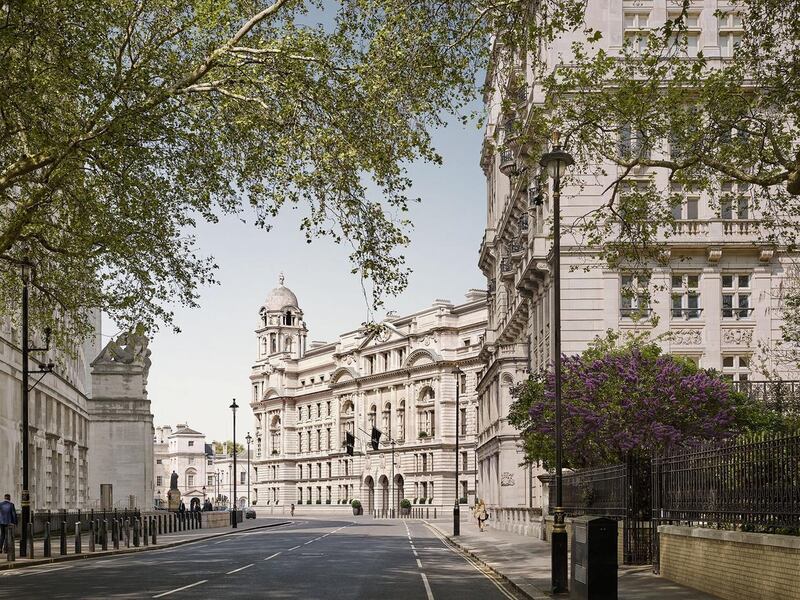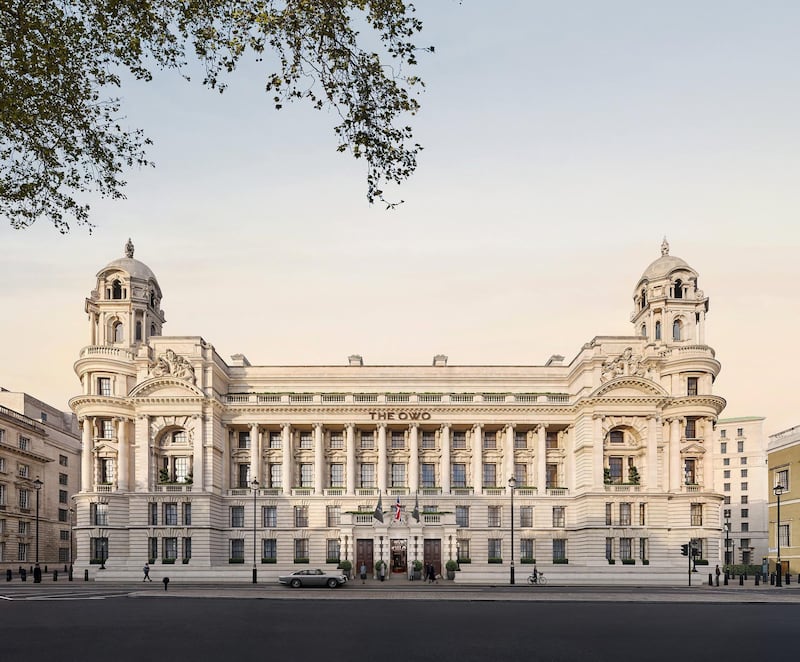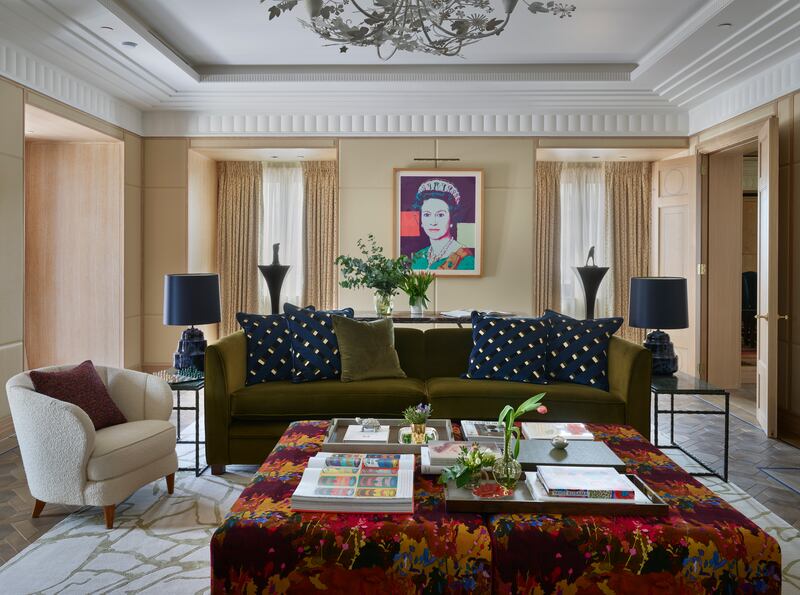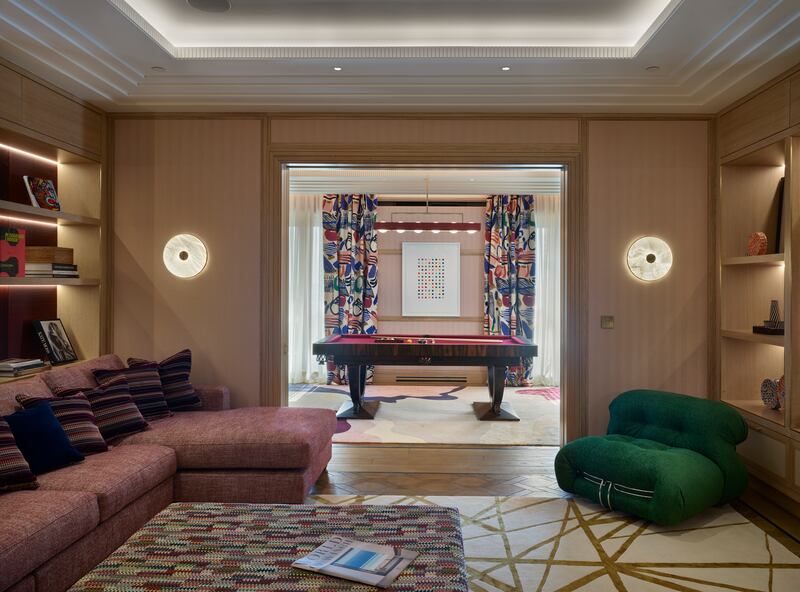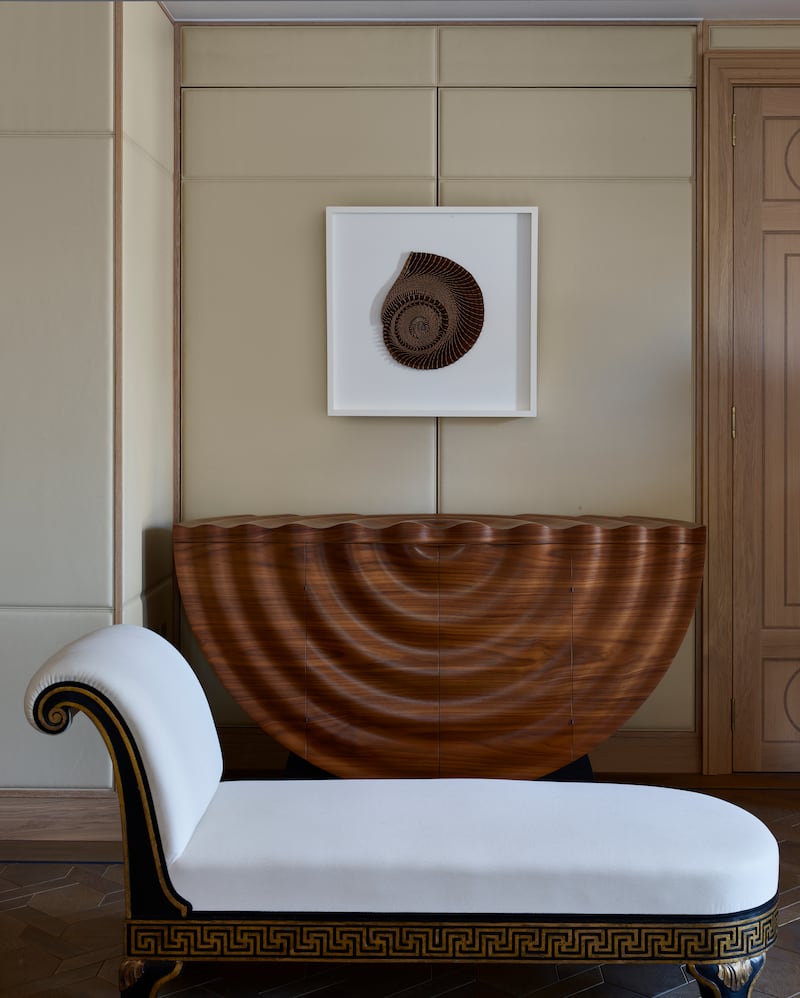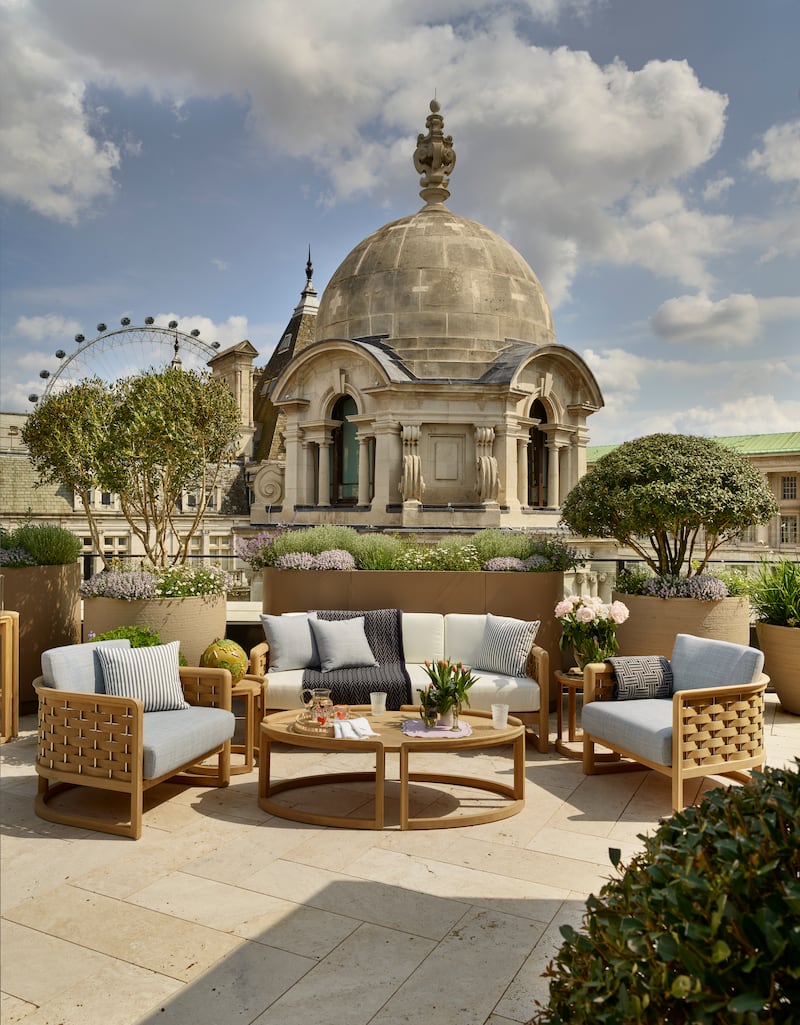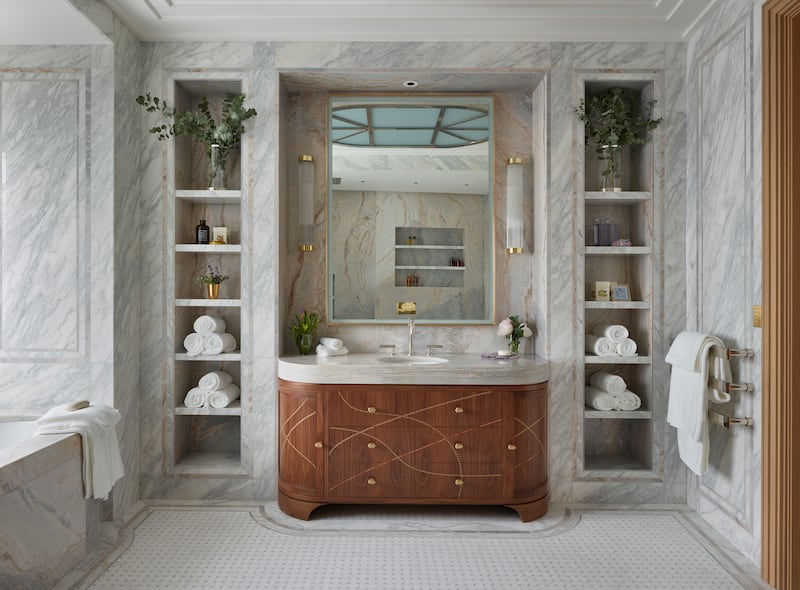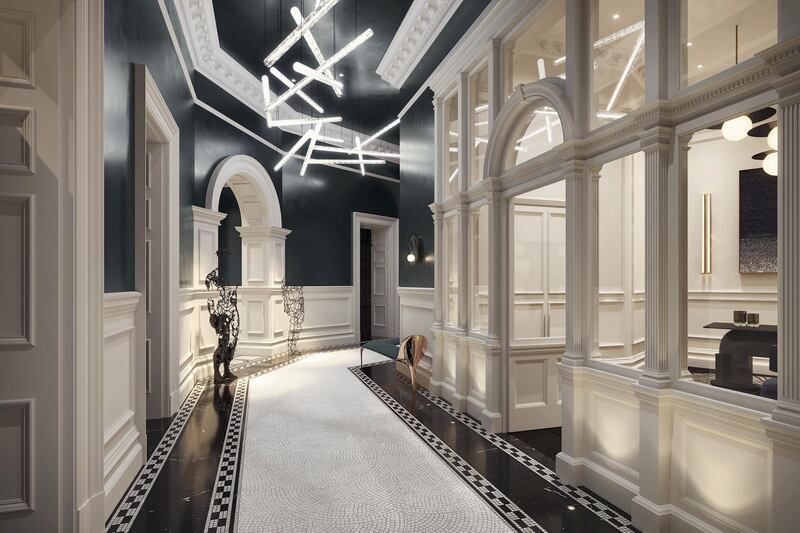It's rare for a building with the history and location of the Old War Office to come on to the market. So when it did, the billionaire Hinduja brothers snapped it up, reportedly for £350 million ($444 million).
Now nearing the fulfilment of its overhaul, the five-bedroom penthouse honours the building's legacy as the home of Britain's espionage elite. Its lead designer took on the task of weaving a secret history into the modern interior design and its expansive terraces boast panoramic views across London.
Sitting at the top of Whitehall, opposite Horse Guards Parade and Downing Street, The OWO is firmly at the centre of British power and the penthouse commands views of St James's Park, Buckingham Palace and Westminster Abbey.
Designed by William Young and completed in 1906, The OWO is one of the greatest examples of Edwardian architecture in London. But the genius of the building as it reopens is just as much in its transformation from being one of the most secretive buildings in the world into a top-class Raffles hotel and residences.
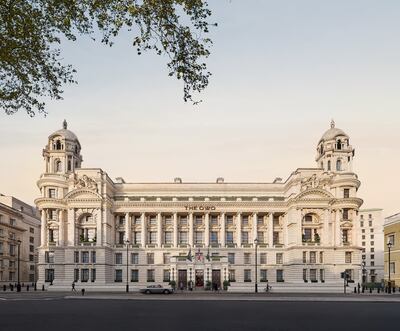
The site had been a seat of power long before The OWO was built – it previously housed the Palace of Whitehall, home to England's monarchs, including Henry VIII, for centuries.
The baroque-style office contained more than 1,000 rooms and two and a half miles of corridors, along which the likes of Winston Churchill, TE Lawrence (Lawrence of Arabia) and Lord Kitchener would have paced.
The building was a repository of secrets. Inside The OWO in 1909, Mansfield Cumming set up a new section of the Secret Service Bureau responsible for espionage activities outside the country, a network of spies that later grew into MI6.
Indeed, Ian Fleming, who also worked in The OWO, based the “M” character in his James Bond novels on Mr Cumming.
The Bond connection doesn't stop there – five of the series' films were filmed in The OWO.
“When the Hinduja family saw this building come up for sale from the Ministry of Defence, they felt it was such a beautiful, stunning piece of history and property, very close to where they live and they're very passionate about this part of London, that they thought this was too good an opportunity to miss, to refurbish an old dame on Whitehall and turn it into something which can be celebrated by future generations to enjoy,” Charlie Walsh, director of sales at The OWO Residences by Raffles, told The National.
That buying opportunity arose in 2015 and the following seven years were spent recreating and refurbishing the Grade II listed OWO to a standard that surpasses excellence.
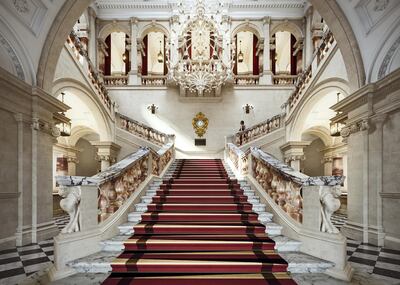
For 20 years, the international luxury hotel chain Raffles had been looking for a particular type of building in which to place its first London hotel. The company is particularly brand-aware and was not interested in a faceless skyscraper which would have luxury potential but lack a soul and a sense of history. In The OWO, though, Raffles found the history it sought.
“We see a building which has grown inside by 50 per cent,” Mr Walsh told The National.
“It's now just over 760,000 square feet, which is an extraordinarily sized building. A lot of that was involved with digging down six floors, so now it's almost as deep below ground as it is [high] above, which is extraordinary.
“And the building is now all about celebrating life, opening up for the public to enjoy, which I think is a really lovely sort of change from what it used to be.”
The public side of this former house of spies faces Whitehall, the famous London thoroughfare that runs from Trafalgar Square to Parliament Square, and will be the new 120-room, five-star Raffles hotel.
The private residences are in the more discreet back section of the building, shielded from the hustle and bustle of Whitehall.
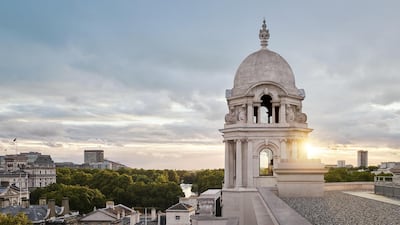
“The residential side of the building is very private, very discreet, which is very much what our buyers want and demand,” Mr Walsh told The National.
“They want that level of privacy. They want to be able to tap into the exciting part of the hotel, the restaurants, the bars, the spa and the ballroom.
“But they also want to know that they can retreat to their private apartments and know that they won't be disturbed.
“They'll be fully looked after by an army of Raffles staff who are absolutely at their A-game, and their DNA is all about hospitality and looking after people. So, I think that's been a real driver for a lot of our buyers to date.”
The OWO has been restored by hundreds of craftspeople restoring period features including hand-laid mosaic floors, rich oak panelling, magnificent chandeliers and the dramatic marble staircase.
In the OWO penthouse it was the task of the luxury interior designers, Winch Design, to create a space which didn't feel like an extension of the Raffles hotel, but a unique home. It's one of the reasons that Winch Design was chosen to work exclusively on the penthouse.
“With our experience with private clients, we ultimately wanted to create something that was more of a private residence, a home if you like, rather than a staged apartment,” Selina McCabe, senior partner at Winch Design, told The National.
“From the very early stages we aimed to create something with personality, something that was inspired by the history of the building, but also tackled the unique architectural details of the roof and the modern edition that this penthouse is.”
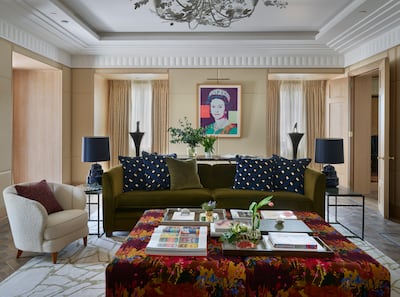
Winch Design undertook the task of weaving the secret history in with the modern design of the five-bedroom OWO penthouse. To achieve this, it brought together more than 40 award-winning suppliers to craft and source bespoke pieces of furniture, fabrics, artwork and accessories.
“What we tried to do is celebrate that history with modern influences,” Ms McCabe said.
“The pieces that you see are a mixture of antique pieces sourced from all over the world, as well as custom-made classic pieces that are designed to keep forever and hand down.
“Meaningful objects carefully curated, rather than soulless pieces that are just plonked in a room.
“From an interiors point of view, we are so lucky to have a building that is just bursting with stories. And to have such strong stories and history already embedded into this building makes our job more effortless.”
The penthouse also features a private gym and sauna, cinema and games room, staff quarters and expansive terraces with panoramic views across London.
Throughout the penthouse's living spaces, classic furnishings are blended with contemporary fabrics, with nods to the sartorial elegance of nearby Savile Row and Jermyn Street, with a modern twist.
For example, some of the furniture designed by British maker Robert Langford evokes The OWO's Georgian architectural heritage, while a modern element is introduced via the bold, geometric fabrics designed by Pierre Frey.
This helps The OWO penthouse move beyond luxury and into the realms of unique luxury.
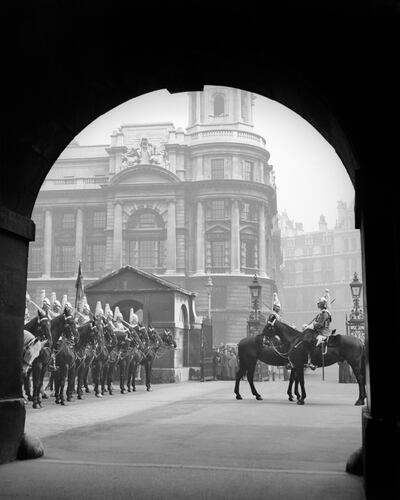
“There's one corner which we all love, because it's got this beautiful 19th century Scandinavian chaise,” Ms McCabe told The National.
“It’s sat in front of the most exquisite, modern drinks cabinet made by the brilliant Edward Johnson, and then sitting above it is the most beautiful artwork created out of folded fabric by one of our wonderful Qest [Queen Elizabeth Scholarship Trust] scholars who's just at the beginning of her career.
“So, three completely different entities coming together to create something carefully created and really meaningful.”
Another key feature of the penthouse are its roof terraces. Impeccably laid out and furnished by Winch Design, the views of London's landmarks are a feast for the eyes. But crucially, the terraces are only seven stories up, so there's a feeling of really being in the Whitehall location, among the impressive architecture of the surrounding buildings, which would be impossible to achieve from a penthouse in a skyscraper.
Those who live in the 85 OWO residences and the penthouse can be as public or as private as they desire. They have full access to the amenities of the Raffles hotel, with its nine restaurants, three bars, immersive spa, 20-metre swimming pool, ballroom with a capacity for 620 seated guests and Winter Garden for afternoon tea and elegant daytime dining.
But there is also 30,000 square feet of amenity space within The OWO itself, separate from the hotel. Residents have access to their own 16-seat cinema, games room, gym with studios and treatment rooms, and seven lounges.
“We've got a bit over a third of the building sold already and we've got a really amazing plethora and mix of nationalities in the building, which is really nice,” Mr Walsh told The National.
“I'd say our biggest demographic of buyers is either American or British – the Americans love the history of the building, the heritage and link to the James Bond characters, Ian Fleming and, obviously, Winston Churchill.”
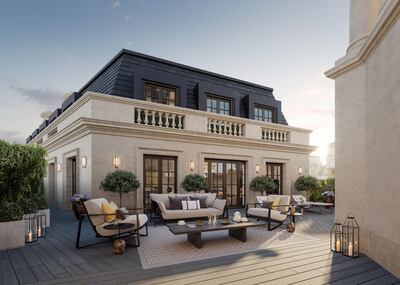
For Mr Walsh, the trend in high-end luxury property leans more towards providence than it does towards flashy bling, which means The OWO residences and the penthouse, with their heritage, are a unique offering. This building doesn't have to scrabble around to overstate a history or connection to a famous person or event.
“A lot of developments have to try very hard, be it through branding or other means, to create a backstory, the history of the building,” Mr Walsh said.
“We are spoilt for choice and pulling out these incredible threads of history and stories – there's almost too much content for us to focus on.
“We still will be discovering stories for many years to come.”
